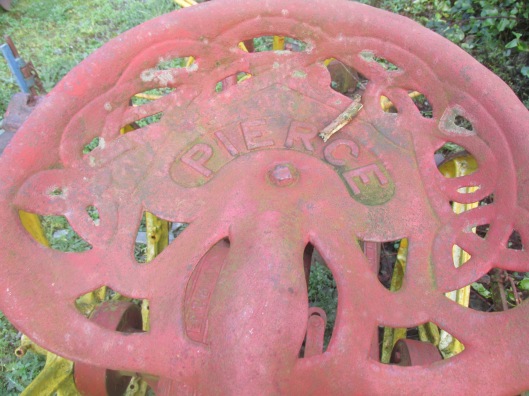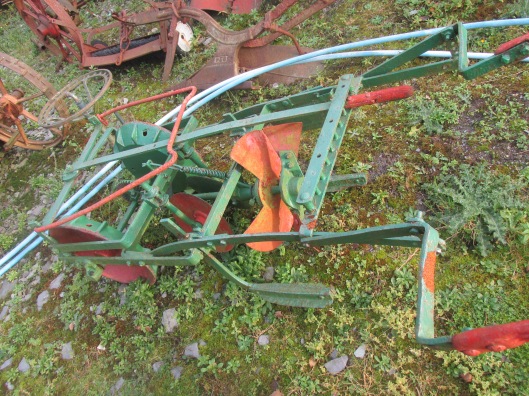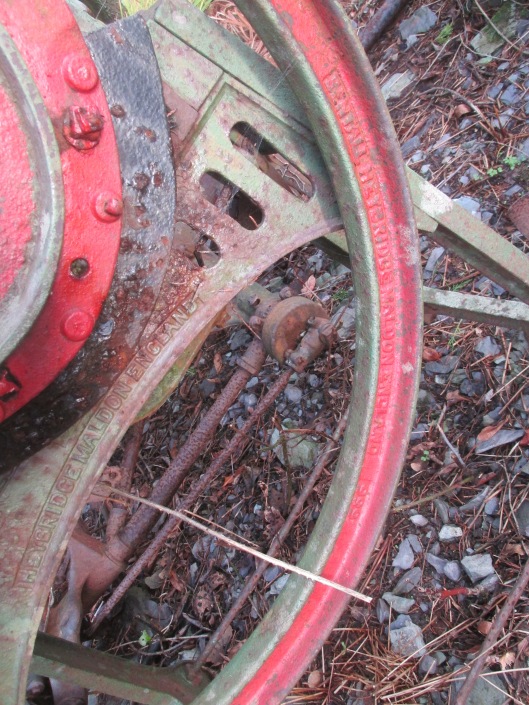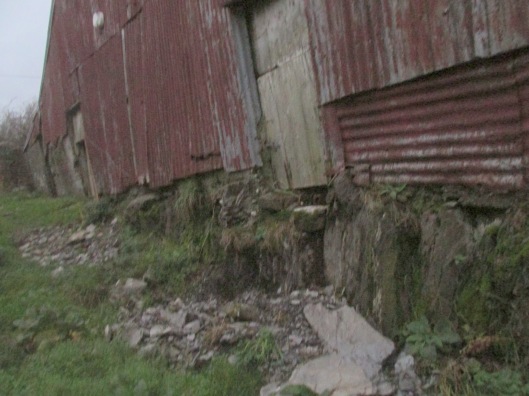Bureau of Military History Statement (WS 1518) of Seán O’Driscoll, Officer Comanding Schull Batallion, West Cork, schedule of action, levy of £300 on farmers, intercepting mail, arms raids, reprisal burning of houses and Troubles in Durrus District
BMH.WS1518
Ted O’Sullivan:
https://durrushistory.wordpress.com/statement-of-ted-osullivan-gortycloona-bantry-co-cork-to-bureau-of-military-history/
Troubles in Durrus District:
The recent publication of the memoirs of Willie Kingston, Solicitor, Skibbereen 1885-1965, (he was the author of a history of West Carbery) provide an interesting insight into the period of the troubles from a person with a Protestant background. He was born into a Methodist family and qualified as a solicitor working in the office of his cousin Jasper Wolfe. He sympathised with the objects of Sinn Fein but abhorred the brutalities committed by both sides. He describes his shock at the killings of William Connell and Matt Sweetnam by the IRA on the 19th. February 1921. He says that at the end of 1920, when it became apparent that the troubles would continue for some time, there was a wave of emigration including some of his own friends. He later describes the period after the truce when on the 26th and 27th April 1922 there was a wave of killings by Irregulars including solicitor Francis Fitzmaurice in Dunmanway, whom he had considered joining in practice earlier. Ten Protestants were shot and it was rumoured there was to be a general massacre of Protestants. 100 protestant families left west Cork in the aftermath. He considered that it was like a volcano about to erupt and decided to ‘clear off to Dublin’ on the 29th. April 1922. He describes the train from Cork to Dublin full of frightened Protestants going to Dublin or England. In the course of the journey there was an explosion at the tunnel in Cork, shots were fired at Limerick Junction and he saw a man with a revolver in his hand.
Raid by Bantry Battalion 16 November 1919 on Royal Navy sloop M.L. 171, 6 rifles 10 revolvers and various ammunition and equipment were seized. At the time the Bantry garrison was 200 soldiers of the King’s Liverpool Regiment billeted in the Workhouse and 15 RIC men
Attack 31 March 1920 by 5th Battalion, Cork No.3 Brigade led by Ted O’Sullivan (later a Senator), on Durrus RIC Barracks (located on Kilcrohane Road after present Avoca House), Constable Donovan had his right hand amputated afterwards due to injuries. O’Farrell claims one RIC man killed. At the time Durrus Barracks was a fortified stone building with steel shuttered windows, outer defences of barbed wire and defended by 12 RIC men. The raid failed to yield any arms and was called off but the barracks was evacuated the next morning. Sean Cotter, a clerk was arrested after midnight. Constable Donovan’s hand was amputated. The defenders received decorations from Major general Tudor a few days later in Kilmallock and were promoted. Compensation of £850 was paid to Lord Bandon in 1924 the owner of the property. There was a sequel in Skibbereen Circuit Court in 1936 when claims for compensation arising from the troubles were heard and John J Levis had a claim for £7 for his bicycle being taken by the IRA admitted in the sum of £5.
The military took over the workhouse in Bantry and the inmates and patients were relocated to Bantry House, which the Leigh-White family opened up.
Bantry Courthouse Burnt 25th. June 1920
In July 1920, volunteers were reported as having restored stolen cattle to Catholic and Protestant farmers in Durrus and it was reported that such activities in the district would come to and end the culprit having been identified.
Bantry R.I.C. Barracks burnt 1920, now part of Bantry Bay Hotel.
Autumn 1920 RIC Barracks at Goleen, Durrus and Kilcrohane (the owner Johanna Tobin received compensation in 1924) evacuated then Ballydehob
Autumn 1920 RIC Barracks at Goleen, Durrus and Kilcrohane (the owner Johanna Tobin received compensation in 1924) evacuated then Ballydehob Barracks closed and old Schull Barracks closed and fortified barracks opened at Meenvane. This was raided on the 4th October 1920 the guns and ammunition taken and the Barracks burnt, captured RIC men and Black and Tans released.
RIC Constable James (Isaac) Rea aged 20 from Durrus wounded, he was shot as he was talking to a local woman in Cappoquin and died 27th December 1920, buried in Durrus with full Military (from Bantry) and Police honours shops and businesses were shut down by order from 2 to 4 by order. At the date of his death he had just over a year’s service
July 1921 Schull Workhouse burned down.
Bigg’s Mill burnt at the Quay in Bantry on the 25th. July 1920. G.W.Biggs wrote a letter to a newspaper stating that this was not the work of Sinn Fein
The barytes mine was raided for explosives
Vickery’s Hotel burnt May, 1921. In 1924 compensation of £14,000 was paid to Ellen Rebecca Vickery.
Two bridges were blown up at the creamery (formerly stone arched now concrete replacement and Dunbeacon road which was damaged. A bridge at Crottees was also blown up. In Bantry the Donemark Bridge was also blown up; this may have been during the Civil War
Ambush on RIC on Bog Road, Clonee, Constable Brett killed on the 21st. June 1920, he was a native of Waterford and had been in the R.I.C. for 30 years, the last 8 in Bantry. On the day in question he gave escort to Constable Cleary, together with Sergeant Driscoll and Constables Cuniffe and Quinn, as Clery served juror’s summons for the forthcoming Quarter Sessions. They were on bicycles and as they approached Clonee Wood on the road to Durrus from Bantry they were raked by gunfire. It was reported that between 20 and 30 assailants were involved. The sopt locally is still known as ‘Brett’s gate’. The inquest in Bantry was presided over by Coroner Neville and the jurors called were John Sweeney; Marine Street, Vintner; William B. Roycroft, Bridge Street, Auctioneer; James Downey, Main Street, Shoemaker; Florence Connolly, Main Street Publican; Richard Swanton, William Street, Flour Merchant; George Symes, Blackrock Terrace, Shop Manager; Charles O’Donovan J.P., Main Street, Draper; Edward Brooks, Marino Street, Shop Assistant; David Mahony, Gurtha, Farmer;
Michael O’Driscoll, Gearhies, Shopkeeper; James J. McCarthy, Wolfe Tone Square, Hotel Keeper; Arthur O’Connor, Blackrock Road, Artisan. When the names were called out, only Roycroft, Swanton and Symes answered; the others had a fine of twenty shillings imposed. It was said at the inquest that ‘no policeman that ever came to Bantry was more popular, and, deservedly s’. No local undertaker would do the funeral and the coffin was taken to the graveyard on the back of a military truck. The military swept the area over the next few days and apprehended a Mr Cotter who was taken to Cork gaol.
30th June 1921 Explosives raid on the Fastnet Lighthouse, one ton recovered.
Incident with Solicitor Jasper Woulfe (later TD for West Cork) described by Willie Kingston, Solicitor, in Skibbereen Historical Journal. Willie Kingston was a cousin of Jasper Wolfe, Solicitor and Crown Prosecutor in Skibbereen. Wolfe at the time had friends in both camps. In April 1921, Wolfe, Kingston and Miss Brown (solicitor’s apprentice from Durrus, later Mrs PF O’Reilly wife of Fine Gael Senator) motored to Durrus where he had a case at Petty Sessions. Kingston had been in Bantry earlier, where he saw two men coming towards him, one saying to the other ‘that’s him’; he thought it was a case of mistaken identity. Later he met Jasper at the hotel and a man came out of the shadows and peered at his face. Jasper had met (Bawnie) T.T. McCarthy, cattle dealer earlier and offered him a lift to Skibbereen. They all went to Durrus in Jasper’s car driven by a chauffer and had tea in Miss Brown’s mother’s house. Leaving Durrus for Caheragh McCarthy was in front with Jasper but his profile indicated him as a cattle dealer rather than the Crown Prosecutor. In Caheragh as they rounded a corner a whistle was blown violently suggesting the man was running and giving a pre-ordained signal. Kingston and Miss Brown crouched down but nothing happened. Jasper had previously a few drinks and slept through the entire episode. When they got back to Skibbereen they heard that an ambush was being laid for Jasper. He thought that the unexpected lift to the cattle dealer had the effect of calling off the ambush.
Willie Kingston also describes attending the Dail Courts at The Land and Labour Hall Skibbereen, Fahoura School, at a field at Derryclough, a stable at Ballyorane and a mill at Donemark. His attendance at Derryclough was photographed by an American lady and appeared in the American papers and later reached Skibbereen. It is said that a Dail Court sat from time to time at Durrus Court.
Workers hut and equipment at Durrus Road Station destroyed by fire.
Kilcrohane RIC Barracks burnt 1920, later blown up.
Timothy ‘Casey’ McCarthy (Captain of Durrus Company IRA)took part in Kilmichael Ambush with General Tom Barry. He worked for 40 years with Dick Carrigaline (the Gays may have been from Cooolculaghta), died December 1956 firing party old old IRA under Captain Raphy P. Keyes rendered military honours at the graveside. Members included Mortimer O’Sullivan, John Keohane, Jack McCarthy, Jack Wholihan. In attendance were Tom Barry, Ned Cotter TD., Dick Gay, Senator Ted O’Sullivan attended removal from St. Finbarr’s hospital
Dan O’Mahony (d. 4 Oct 1975), Ahagouna, Battalion Commandant (Fifth Battalion, Bantry), Tom Ward, Durrus, Vice-Commandant, Denis O’Leary, Durrus, Jack McCarthy Durrus, Gibbs Ross (died Civil War) Durrus Brigade Adjutant.
The Philips family removed the sign ‘The Bandon Arms’ from their hotel to prevent trouble.
The Southern Star reported a case 3rd May 1924 where two former IRA members were accused of theft of a trap harness and cushions from Samuel Levis shortly before the signing of the Treaty. They were defended by Jasper Woulfe and the evidence was that at the time the Durrus area was completely under the control of the Republican army. The men were acting on orders. The jury convicted but recommended mercy and the judge remarked in discharging the prisoners on security of £10 that ‘it is rather hard that certain men should be prosecuted after the lapse of some time and others be let go free’
During the troubles and the civil war there were a number of men ‘on the run’ and were put up in safe houses. During the civil war the Free State forces were pressing against the reputed safe houses and it is said that many ‘on the run’ made their escape by boat from the Muintervara Peninsula or from Dunbeacon over the hills by Mount Gabriel to Schull
After the killing of Commandant Gibbs Ross and three others in Bantry on the 13th August 1922 a pro treaty man was taken from Bantry to a house in Upper Clashadoo/Gerhameen. He got on well with his captors even playing bowling with them. He was eventually released
The combined effect of the First World War, the Troubles and the Civil War exacted a heavy toll both on the physical condition of the countryside and on the morale of the people. Willie Kingston alluded to the fact that many of his friends decided to emigrate rather then face an uncertain future. This fate also awaited many of those on the losing side of the Civil War, at least in the 1920s. The country could ill afford such losses of energy and youth and fell into a stupor with a dominant Catholic Church for the best part of 50 years after.











































































































